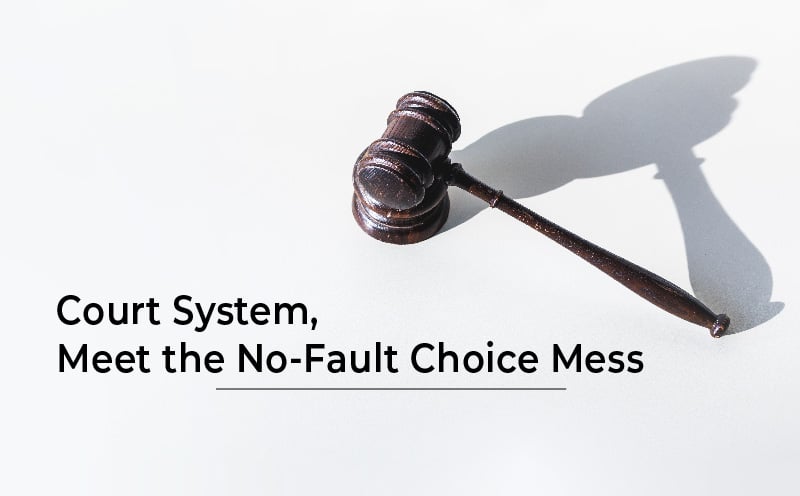Court System, Meet the No-Fault Choice Mess

With our collective attention gripped by COVID-19 and the struggle for racial justice, it is easy to forget that the world of auto no-fault law just underwent a massive sea change. Effective July 1, 2020, all Michigan consumers can choose monetary limits on allowable expense PIP benefits. While some consumers can opt out entirely of these benefits, everyone is permitted to limit their allowable expense benefit coverage to $250,000 or $500,000 in per person/per occurrence limits.
Branded as no-fault “choice,” this change comes from the massive 2019 no-fault overhaul courtesy of Public Acts 21 and 22. Those two Public Acts consume over 40 pages of single-spaced text. One would thus think that somewhere in those pages lies the answer to this fundamental question: how do insurers administer payment of no-fault claims under capped policies? Yet search high and low, and you find no such answer.
Let’s assume a common set of hypothetical facts. Joe is seriously injured in a car crash. He is transferred by ambulance to the hospital, where he is admitted and undergoes multiple surgeries. Joe is then transferred to a rehabilitation facility where he receives inpatient therapy. He is later discharged to home and undergoes outpatient therapy and follow-up doctor appointments.
Now let’s assume that Joe has a $250,000 no-fault policy. Yet by the time his bills end up on the no-fault adjuster’s desk, his total medical bills far exceed $250,000. How does the no-fault adjuster handle the bills? Pay the providers who rendered services first? Pay the first providers to bill? Liquidate the claim by giving Joe the $250,000 and have him settle his debts with his providers?
Public Acts 21/22 provide no answers to these questions. Yet the existing no-fault statute suggests that all of the above are problematic. That is because MCL 500.3112 states that, in order to discharge its payment obligation in good faith, a no-fault insurer needs to consider all claims of which the insurer has been notified in writing.
So insurers will likely be forced to turn to the court system. They may do so by invoking another phrase of Section 3112: “If there is doubt about the proper person to receive the benefits or the proper apportionment among the persons entitled to the benefits, the insurer, the claimant, or any other interested person may apply to the circuit court for an appropriate order.” Similarly, insurers may come to court as plaintiffs under the interpleader provisions of MCR 3.603(1): “Persons having claims against the plaintiff may be joined as defendants and required to interplead when their claims are such that the plaintiff is or may be exposed to double or multiple liability.”
Either approach forces trial judges to act like bankruptcy trustees after every car crash and subjects every medical provider to becoming a potential unwitting defendant. It should not be this way. But sadly, no-fault reform is another example of the judiciary being forced to clean up the messes created by the haste of the other branches of government.
Authored by Grand Rapids car accident attorney, Tom Sinas

